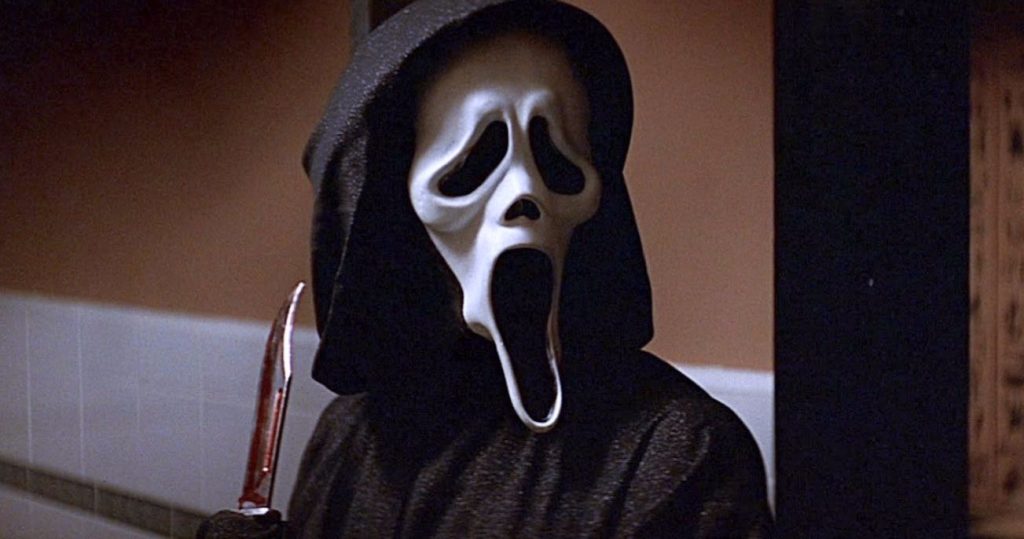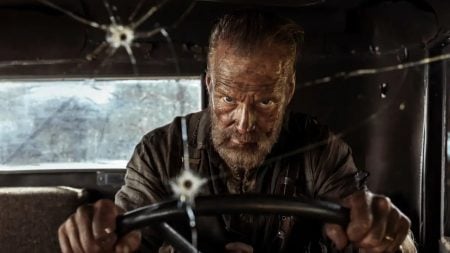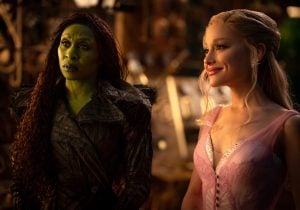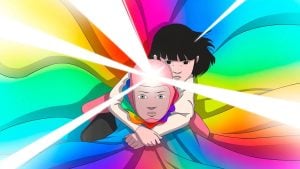A bit of transparency before we dive into this list together: I’m of the belief that there is not a single bad entry of the Scream franchise. Yes, some are less accomplished than others, but even the weakest movie in the now 25-year-plus series is objectively better made than the vast majority of horror sequels. For that matter, any of the Scream movies can go toe-to-toe with most franchises of any genre in terms of sheer craft and enjoyability. It’s part of what makes Scream such a precious part of horror history, and why so many of us flocked to see the newest iteration this past weekend. Scream is special, and this list is simply one more way of celebrating something we love. So, shall we?
Scream 3

The final entry in any trilogy carries the unfair burden of telling its own story while also delivering an emotional capstone to the whole project. Originally conceived as the grand finale for the Scream story, Scream 3 suffers at times from self-conscious decisions to raise the stakes one last time. The strain is inherent in the setting: transporting the action to Hollywood blows out the scope from the previous two films. The Hollywood backdrop makes everything seem that much bigger, which alternates between supplying the film with campy fun and straying too far from what makes Scream so sublime. Scream movies have always been wrapped up in commenting on horror filmmaking, but the literalizing of that into the plot, with cast members playing Sidney, Gale, and Dewey dampens some of the bite. What this movie does unequivocally have though is a remarkable Neve Campbell performance within a stirring Sidney arc. Seeing Sid as a crisis hotline phone operator is a poignant note about the character’s commitment to helping others heal, and it makes her triumphant return to face down the newest Ghostface that much more satisfying.
Scream 2

While the opening kill scene does not quite reach the original’s heights of terror, placing it in a Stab screening sets up one of the franchise’s most inexhaustible points of meta-commentary while also providing the necessary grisly delight. Furthermore, if the first Scream nods most directly to Halloween (1978), Scream 2 is Craven’s hat tip to Black Christmas (1974). Sidney has entered college, still at a point in the franchise where she’s hoping to leave Ghostface in the past and move along into a semi-normal life. That college background rapidly transforms from one of potential happiness to Black Christmas-esque killing fields. One of the film’s most chilling sequences features the new Ghostface terrorizing a sorority girl, melding what Craven accomplished in the first film with a literalized nod to Bob Clark’s inspirational work. Scream 2 also delivers on the Cotton Weary-sized promise of the first film, bringing the newly-exonerated man into the fold as a proper supporting character. As such, Scream 2 successfully builds out a massive cast of potential killers and storms through a tension-filled two hours of lovely red herrings and macabre set pieces.
Scream 4

The final Scream entry with Craven in the director’s chair, Scream 4 returns to Woodsboro for the first time since the original, and to exceptional effect. The film’s opening sequence, one that dominoes through a series of Russian Doll kill sequences from the newest Stab film before settling on the actual new Ghostface murder, is majestic. It recaptures the self-referential heights of the original with the new chance to turn the well-meaning snideness inward. It takes longer here for Sidney, Gale, and Dewey to reach center frame, but by introducing Kirby Reed, the best character since the original crew, the film does not miss a beat. In that regard, possibly more so than any other entry, Scream 4 bursts with exceptional supporting roles. Panettiere as the aforementioned Kirby is a standout, but Alison Brie as Sidney’s greedy publicist Rebecca, and an underrated Rory Culkin as eventual killer Charlie crackle as well. Thematically, Scream 4 also stages a withering and ahead of its time commentary on internet fame and social media. All the while achieving the most resonant aura of dread in any sequel to that point. Gone is the campiness of Scream 3, replaced by bloodthirsty cynicism. These kills stick with you.
Scream ’22

Might it be recency bias? Possibly, but I doubt it. The first Scream sequel without Craven returns most explicitly to the original text for a sort-of-requel that bursts with love for the franchise while maintaining enough distance not to succumb to egregious fan service. Taking all the right lessons from Scream 4, Scream ’22 treats the legacy cast like special guest stars in the new characters’ stories in a way that manages to honor Sidney, Gale, and Dewey while avoiding creative choices that would cause them to overshadow the new cast. Leading the way in this new group as a concerned-older-sister-with-a-secret-Sam-Carpenter is Melissa Barrera, who follows up on an outstanding turn in In the Heights (2021) with a convincing bid to join the ranks of iconic scream queens. Alongside her, Jenna Ortega, Jack Quaid, and a seemingly everywhere right now Jasmin Savoy Brown bring indelible heart to a tale about traumatic history and self-identity. Plus, new directors Matt Bettinelli-Olpin and Tyler Gillet prove almost equal to Craven’s innate sense of horror mise-en-scène. Their kill sequences are elegantly vicious from the top, and my do they understand how to execute a stunning plot twist. I won’t speak to anything even near a spoiler, but will simply say if they want to make more Scream films I will happily hand over my money.
Scream

Was there really any doubt? Stating the obvious, none of the other entries on this list would exist if Kevin Williamson and Wes Craven had not crafted an all-time, first-ballot-hall-of-famer, horror movie in 1996. There are endless reasons both critical and gut-level emotional to love Scream, and they roll out from the opening seconds. Watching the Drew Barrymore opener today, knowing full well the fate that awaits her, it still crackles with gleeful malevolence. Sidney and Billy’s first scene gives you all you need to know about who both of them really are, even if the next hour and a half makes you wonder if this guy is actually as much of a creep as he seems. But is Neve Campbell, Courteney Cox, and David Arquette that instantly solidify as icons, their respective arcs and performances mercilessly toying with audience expectations of the archetypes they fit into. Combine that with a Craven at the absolute peak of his directorial craft and Scream unspools as much as a cohesive film as a series of endlessly rewatchable scenes. Sidney’s first phone call and fight with Ghostface. Sidney punching Gale in the alley. Randy monologuing on the rules of horror movies we must all respect. The iciness of Billy lilting “we all go a little mad sometimes.” Over 25 years later, Scream remains a sterling example of what the genre can produce when touched by true brilliance.

Devin McGrath-Conwell holds a B.A. in Film / English from Middlebury College and is currently pursuing an MFA in Screenwriting from Emerson College. His obsessions include all things horror, David Lynch, the darkest of satires, and Billy Joel. Devin’s writing has also appeared in publications such as Filmhounds Magazine, Film Cred, Horror Homeroom, and Cinema Scholars.






